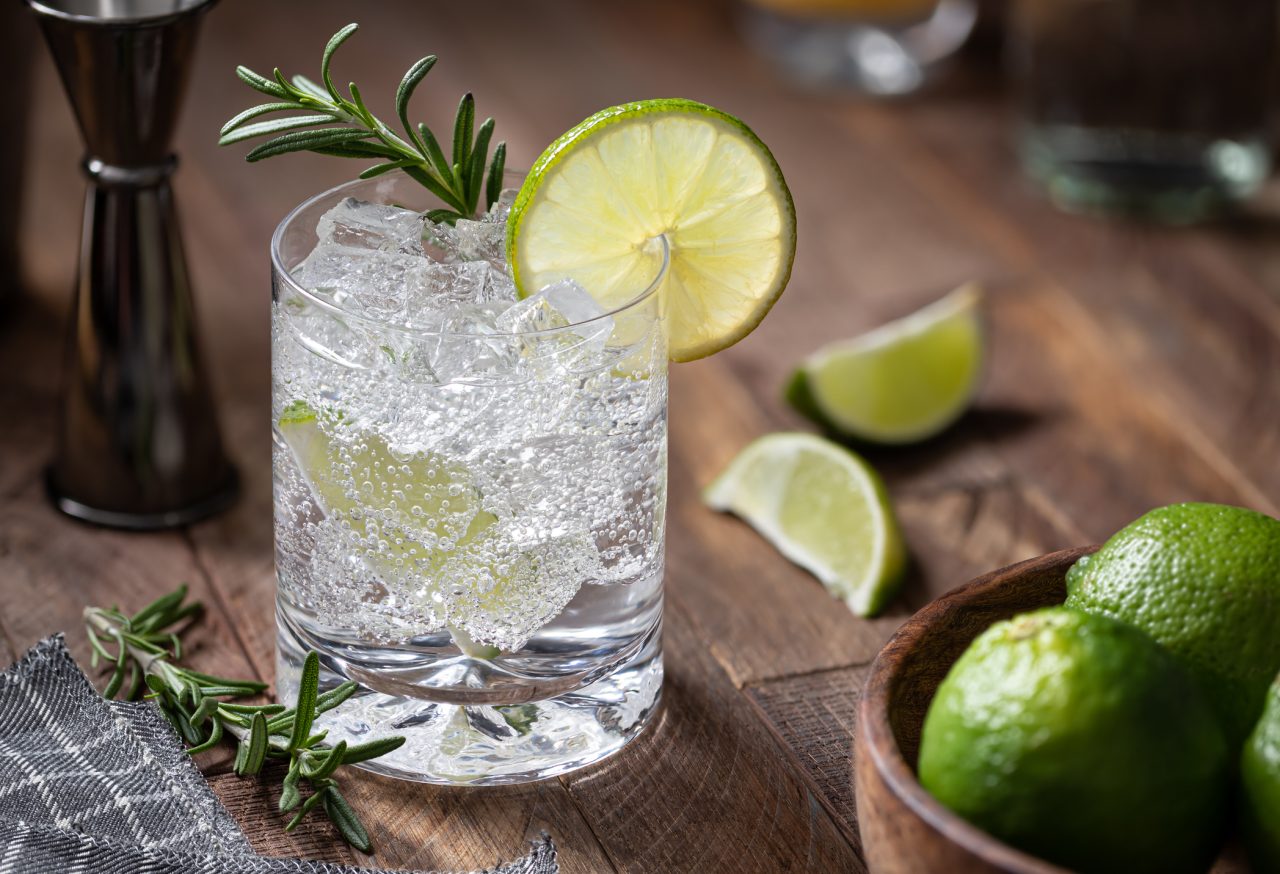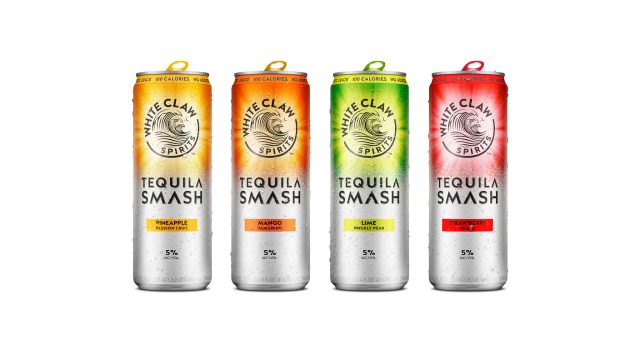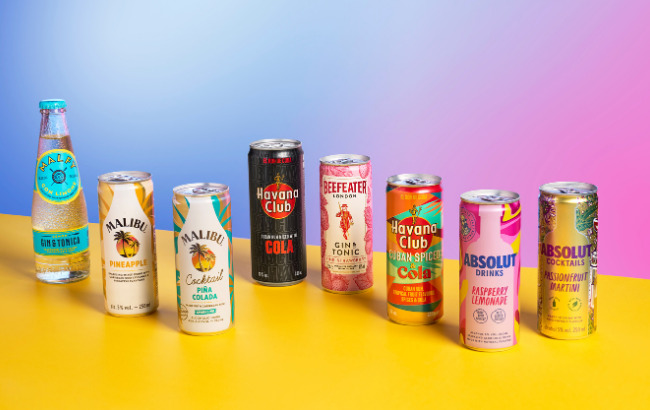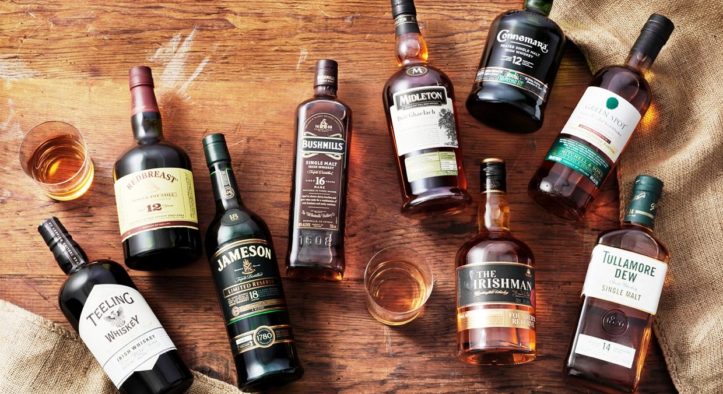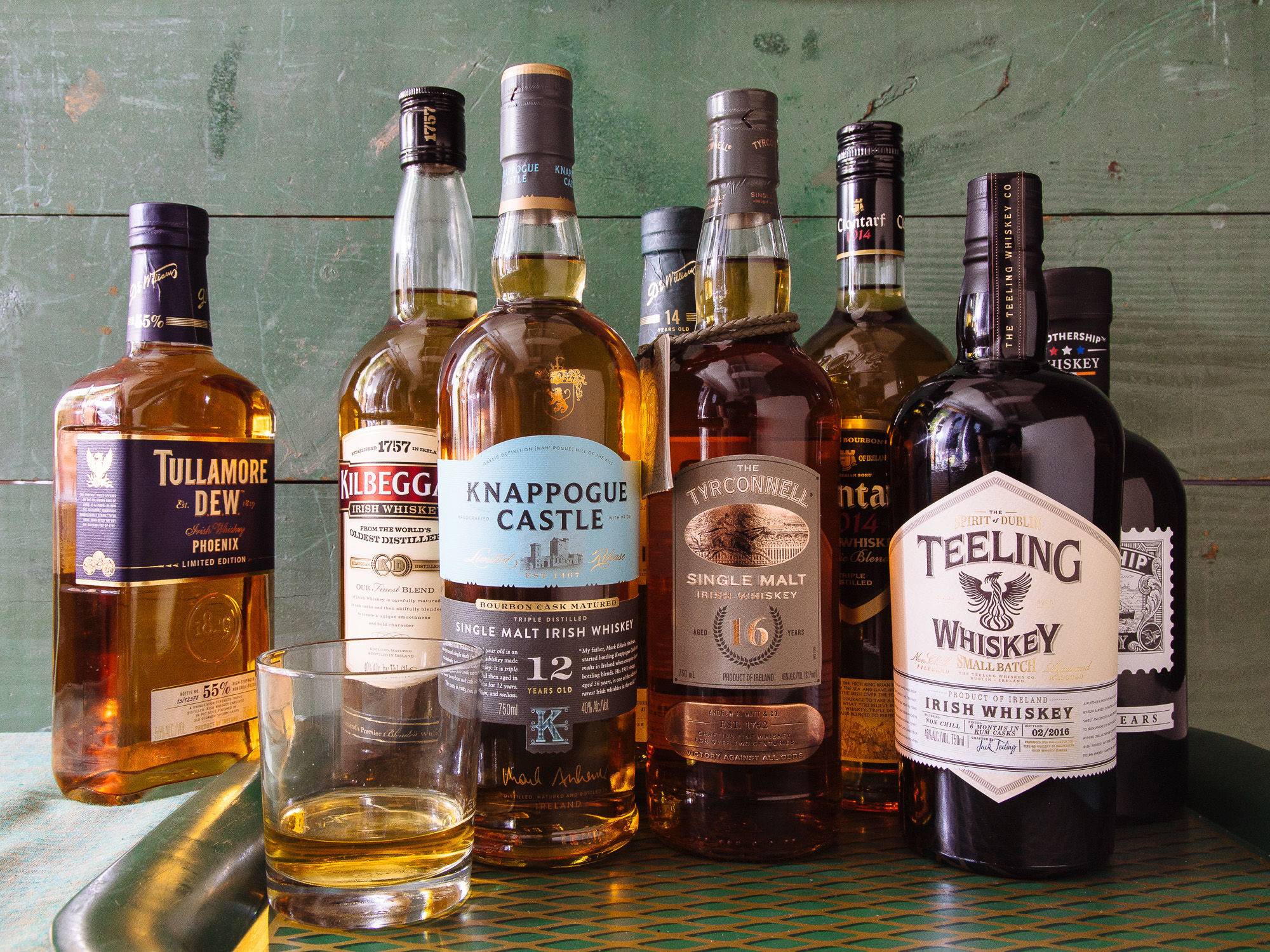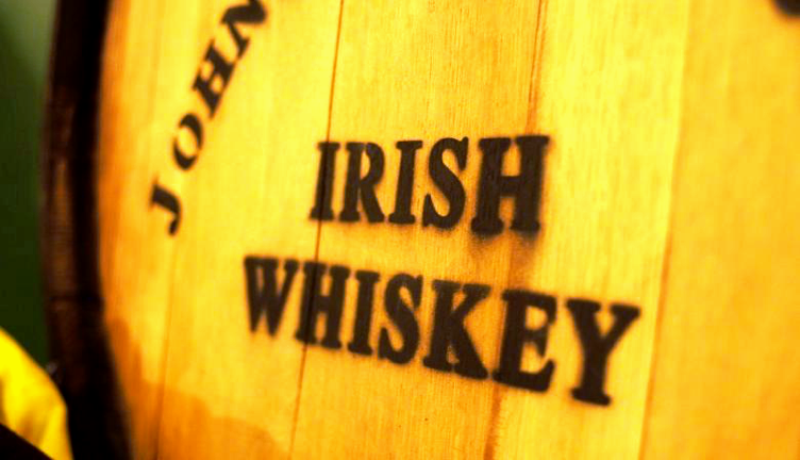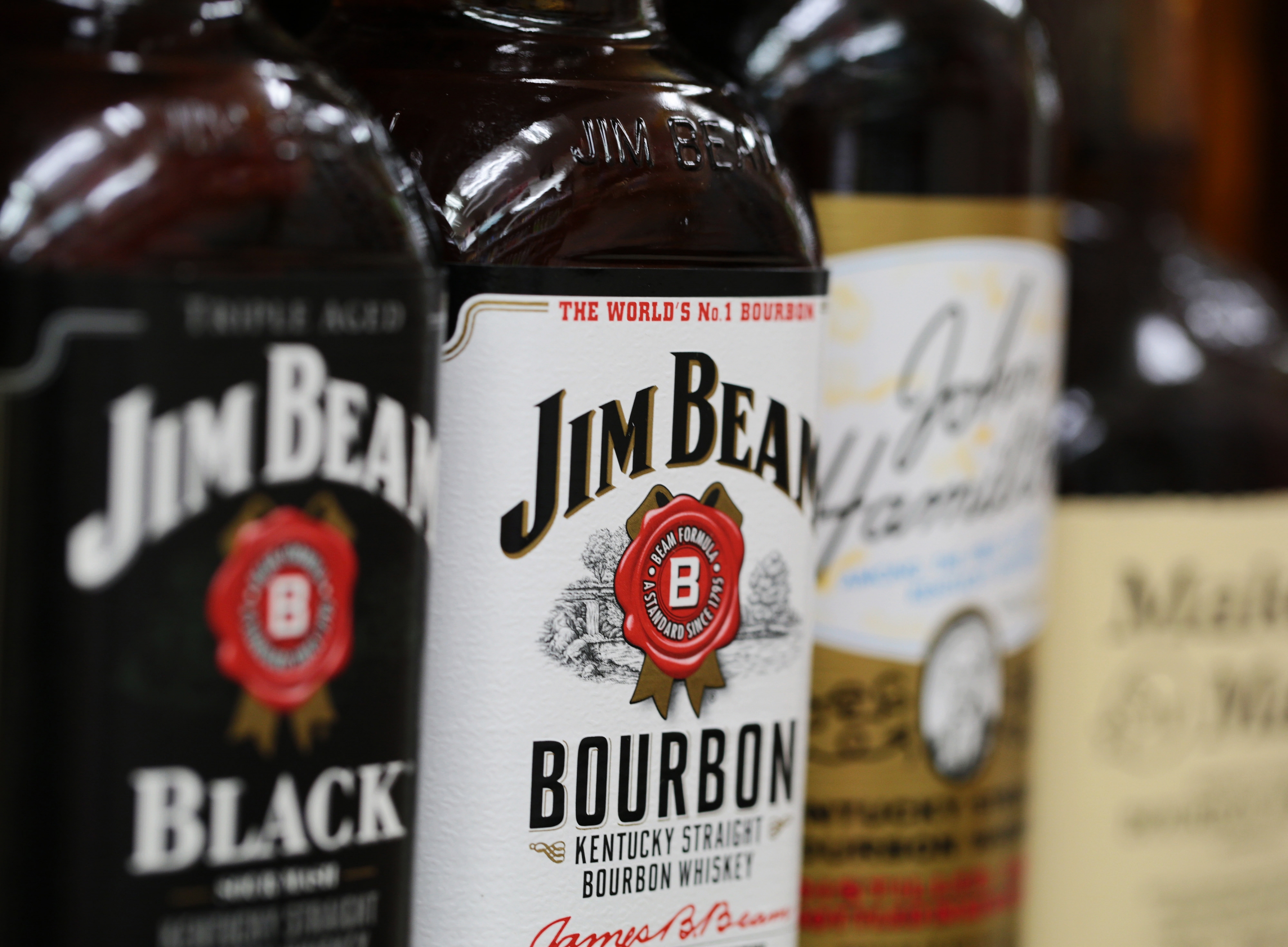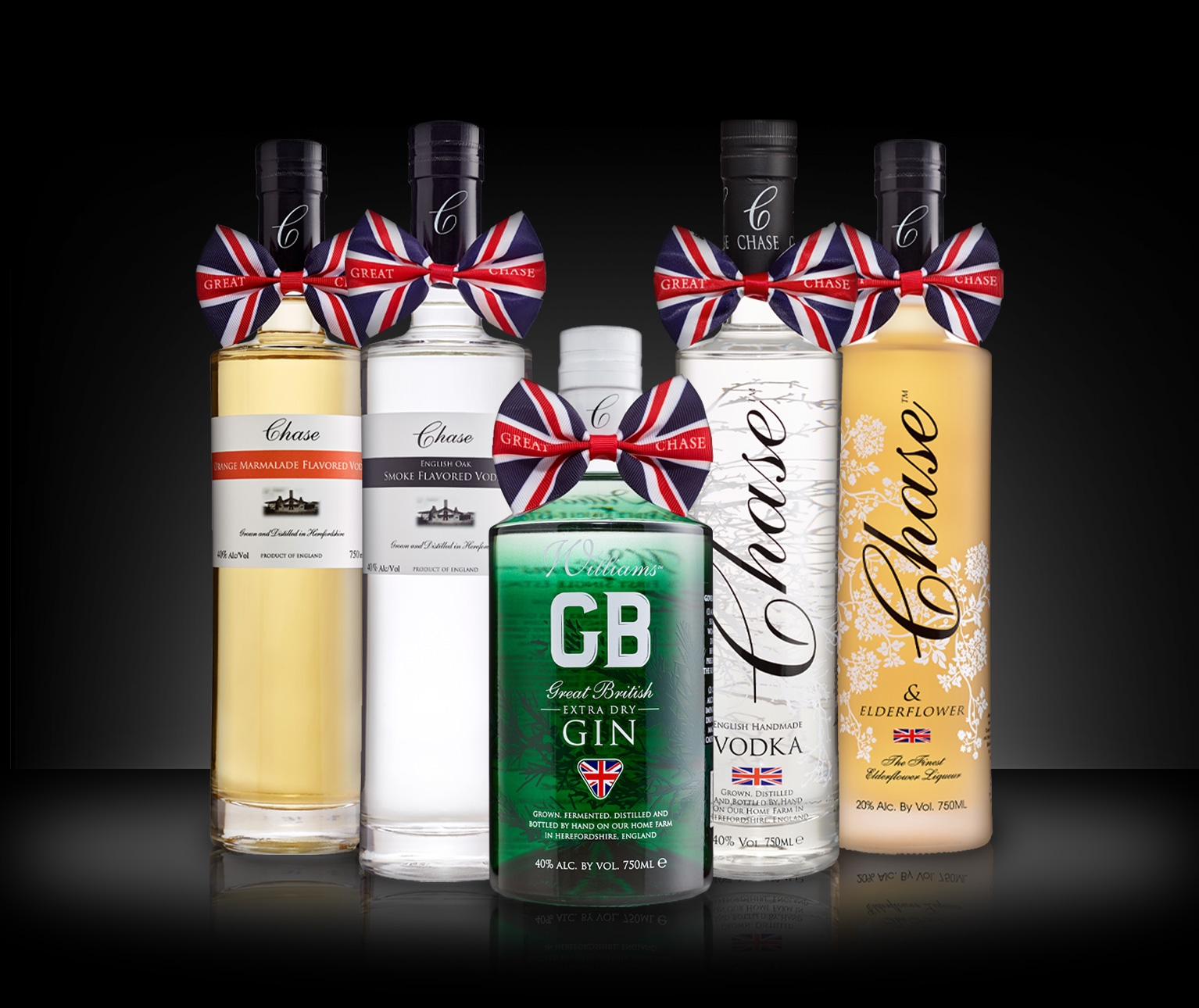Irish whiskey is one of the most talked about spirits categories in the world – with a history dating back to the 12th century it is one of the oldest too.
But much like the economies of Europe, Irish whiskey suffered a depression at the turn of the 20th century. The overall Irish whiskey export gures declined dramatically between 1900 and 1914 while the domestic market suffered in both consumption and production due to an increase in spirit duty by almost a third as proposed by Lloyd George in his 1909 budget.
This depression is now history and exports of Irish whiskey have increased 370% since 2010 to US$809m last year, according to figures supplied by the Irish government trade department, Bord Bia.
This growth has primarily been driven by interest in the US and with Diageo launching its Roe & Coe brand in 2017 and Irish Distillers rebranding Powers at the start of this year, serious investment is taking place within the category.
Pernod’s Irish Distillers has unquestionably been the driving force behind the category for decades and totally dominated the market with Jameson, and while it’s volumes saw a 9% increase in 2018, according to DI’s The Millionaires’ Club, the shape of the market is changing rapidly.
By the end of 2019 there were 31 registered Irish whiskey distilleries, which is the most since 1900, and in 2018 the International Spirits Challenge saw a rise in the number of Irish whiskey entrants, while the number of gold medals and higher increased by more than 100%.
Stephen Teeling, sales & marketing director at Teeling Whiskey, says: “I think consumers are now starting to gain con dence in the fact there is a genuine Irish whiskey category, which is no longer run by one or two big companies.”
GOING PREMIUM
Premiumisation is a term thrown around in the drinks industry but Irish whiskey is a prime example of a cate- gory that has totally transformed over the past decade with a premium revolution. Bushmills, Diageo’s old Irish whiskey brand, remains one of the most established premium brands on the market and master distiller Colum Egan believes it is prepped to benefit from the trend.
“I would say that one of the biggest trends in our industry right now is the premiumisation of Irish whiskey,” says Egan. “With more than 400 years of whiskey-making heritage we continue to experience consistent demand for our portfolio of single malts and premium blended Irish whiskeys.
“To keep up with demand and introduce new products consumers will love, we continue to drive innovation, premiumisation and create premium products consumers will love as we want to give people a real experience when they’re drinking Bushmills.”
SHAKE OUT
The rise of gin in the 21st century led to an aggressive rise in new products, many of which were short-term brands seeking a quick return on sales without a long-term plan, and the Irish whiskey category should be keen to avoid repetition.
Teeling launched its rst whiskey in 2013 and now employs 10 brand ambassadors in the US alone, having sold 1m bottles last year. The brand is one of the leaders in the wave of new premium Irish whiskeys, which have begun to diversify a market dominated by the Goliath that is Jameson.
Teeling adds: “We’ve been talking about the premiumisation of Irish whiskey for more than 10 years now and to see it actually happening is exciting.”
He says: “In terms of the category shakeout I would question the brands that have not thought about the long term. Have they gone through the process of building their own distillery or do they really understand what the consumer is looking for? Often they come from outside the whiskey industry.
“It’s important to look ve to 10 years ahead rather than ve to 10 weeks, which some new brands are trying to do. There are new young brands coming to market thinking they can skip a few steps and it just doesn’t work in the same way as gin.”
Surfing across the Irish Sea to Scotland, whisky has witnessed a boom in the popularity of single malts, given their premium and more inter- esting appeal to consumers around the world. Now a similar trend has emerged in Ireland with a wave of new single malts coming to market, including Teeling, in an attempt to replicate this success.
Teeling adds: “There’s a massive role for single malt to play in Irish whiskey and I truly believe there’s scope to have an Irish single malt with a much wider appeal internationally.
“But I think Irish single malts t into the world whiskey movement rather than going up against scotch. I also don’t think the future for Irish whiskey is by trying to tap into the age statement scotch single malt category, but instead those consumers looking for interesting world single malts.”
NEW BOUNDARIES
The extensive history of Irish whiskey means there’s not just an opportunity to launch new brands, but to resurrect those with an immediate heritage.
Kinahan’s was originally launched in 1779 and still carries the ‘LL’ mark on every bottle, after the Lord Lieutenant of Ireland demanded his own vat of whisky back in 1807. However, a er the brand disappeared during the Irish whiskey depression of the 1920s it was revived in 2014 and began exporting the following year. The company launched The Kasc Project last year, which employs what it calls hybrid cask ageing to give its whiskeys a unique profile. The technique uses barrels made from very different wood types to age its liquid, which is something new to the category.
“We aren’t a big corporation so we can’t launch gimmicks,” says Lewis Johnstone, global sales and marketing officer. “We’re never going to stop innovating because we want to push the boundaries.”
The brand is using woods from Portugal, old armagnac casks and even chestnut in its experimentation, which shows just how far it’s willing to push the category forward and offer something new.
Johnstone adds: “At the moment we acquire whiskey from two or three distillers of note and then we bring the casks in and do what we want to be famous for – making great whiskey with our wood expertise.”
Quinzil Du Plessis, Kinahan’s master of wood and liquid innovation, says: “It’s diffcult to make a bad spirit these days because of all the checks and regulations you have to go through in order to produce a whiskey.
“It’s more about what you do with the liquid and how you choose your casks, select your wood and how you maintain them.
“All these things are big decisions and there’s a di erence between the wood changing your whiskey or just becoming a storage vessel. Some people are storing whiskey in old barrels which are done and it’s having no effect, which results in bad whiskey.”
STOCKS
Irish whiskey is one of the fastest growing spirits categories on the planet but it could do with learning from the supply and demand issues faced by Japanese whisky. In Japan the thirsty domestic market, combined with an international demand, put a strain on supplies, which led to shortages in exports. Ireland cannot afford to make the same mistake.
Bushmills’ Egan says: “The biggest issue our industry faces is how to meet demand while maintaining the quality consumers are looking for.
“Part of this is about continuing to use the right raw materials that help lead to the quality and taste we’re famous for. For instance, we’re always looking for the perfect casks to use to craft our whiskey.
“It’s important to maintain a high level of quality because another challenge is that the increased demand is making the category more competitive.”
The major investment of international conglomerates such as Pernod Ricard and Diageo suggests the top brands won’t su er from supply issues, but the new wave of premium Irish whiskeys are the ones that need to be proactive looking ahead.
Johnstone adds: “We went from 0-20 export markets in 12 months, which has kept us quite busy, but we’re not going to outstrip our supply. There’s not a bar- rel in Ireland that Quinzil doesn’t know about.”
TOURISTS
The safety net that has been presented to the Irish whiskey indus- try is the growth in tourism. According to the Irish Whiskey Association, visitors to the 17 open Irish whis- key visitor centres in 2018 rose 10.5% to more than 1m and in 2017 Irish Distillers invested €11m to refurbish its Jameson visitor centre in Midleton. Stephen Teeling says: “We’ve had half a million visitors since we opened in 2015 and the surprise for us is that 25% of them are Irish, even though we thought it would be an export-led strategy.
“The category is in a good place with a lot of energy. In the next ve to 10 years the category is set to double or if not triple in size, which is a vast increase. Will the big players get bigger? I’d say most definitely but the more premium, specialist section will certainly grow.”
What needs to happen for Irish whiskey to continue on its dramatic rise is for premium newcomers to ensure their future stocks and revenues are secure. This will see them out-live the short-term money making bottlers and fine tune the Irish whiskey sector to make it one of the world’s great whiskey producing countries. There has never been a more exciting time for Irish whiskey, even prior to the great depression, with innovative brands such as Kinahan’s pushing the boundaries, new age premium brands such as Teeling flying the premium flag and major players like Jameson putting it on the map internationally.
Source: Drinks International by Shay Waterworth








